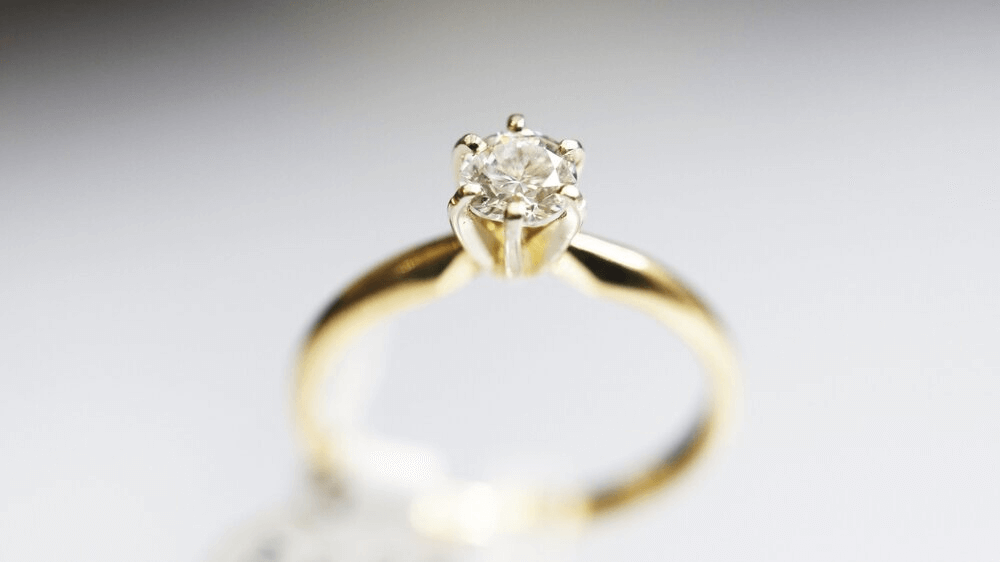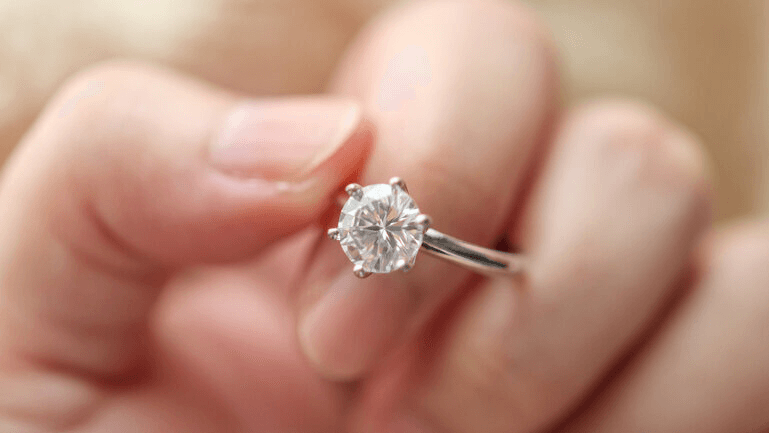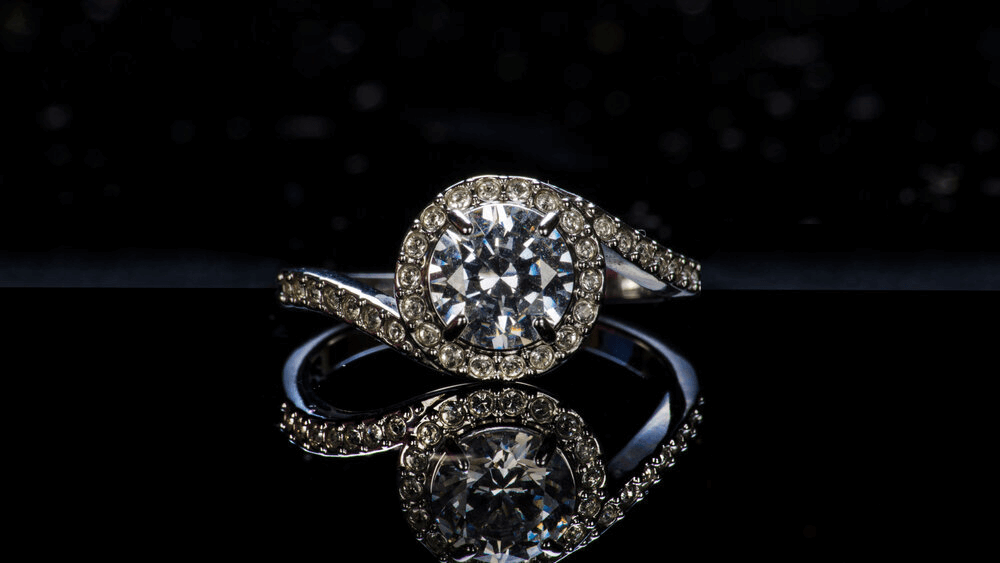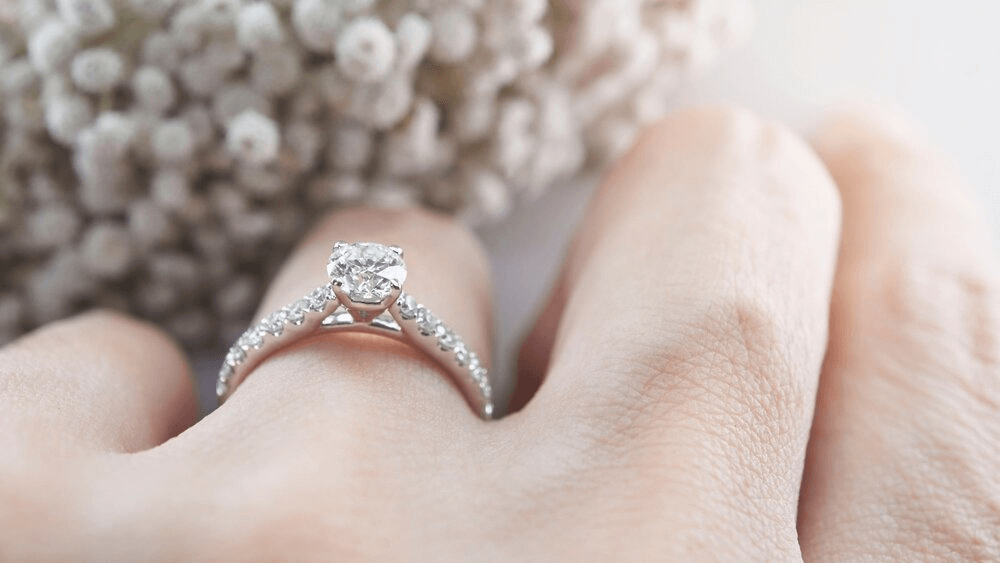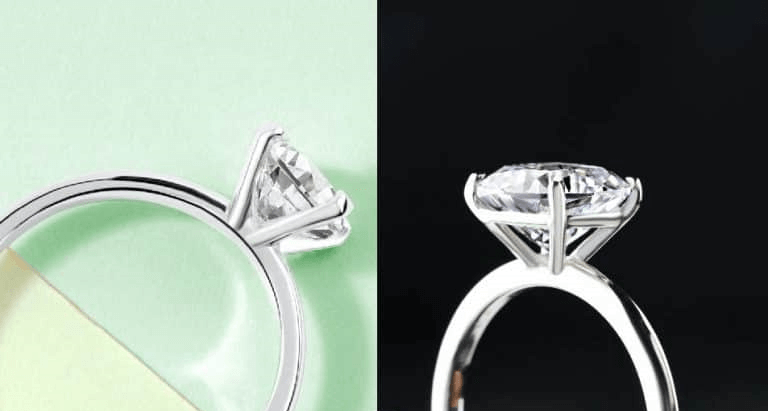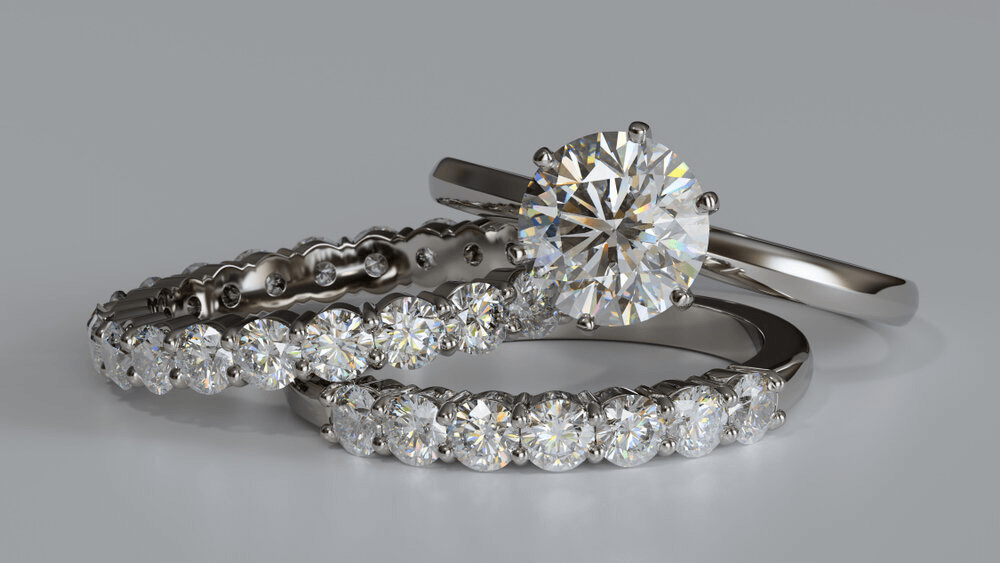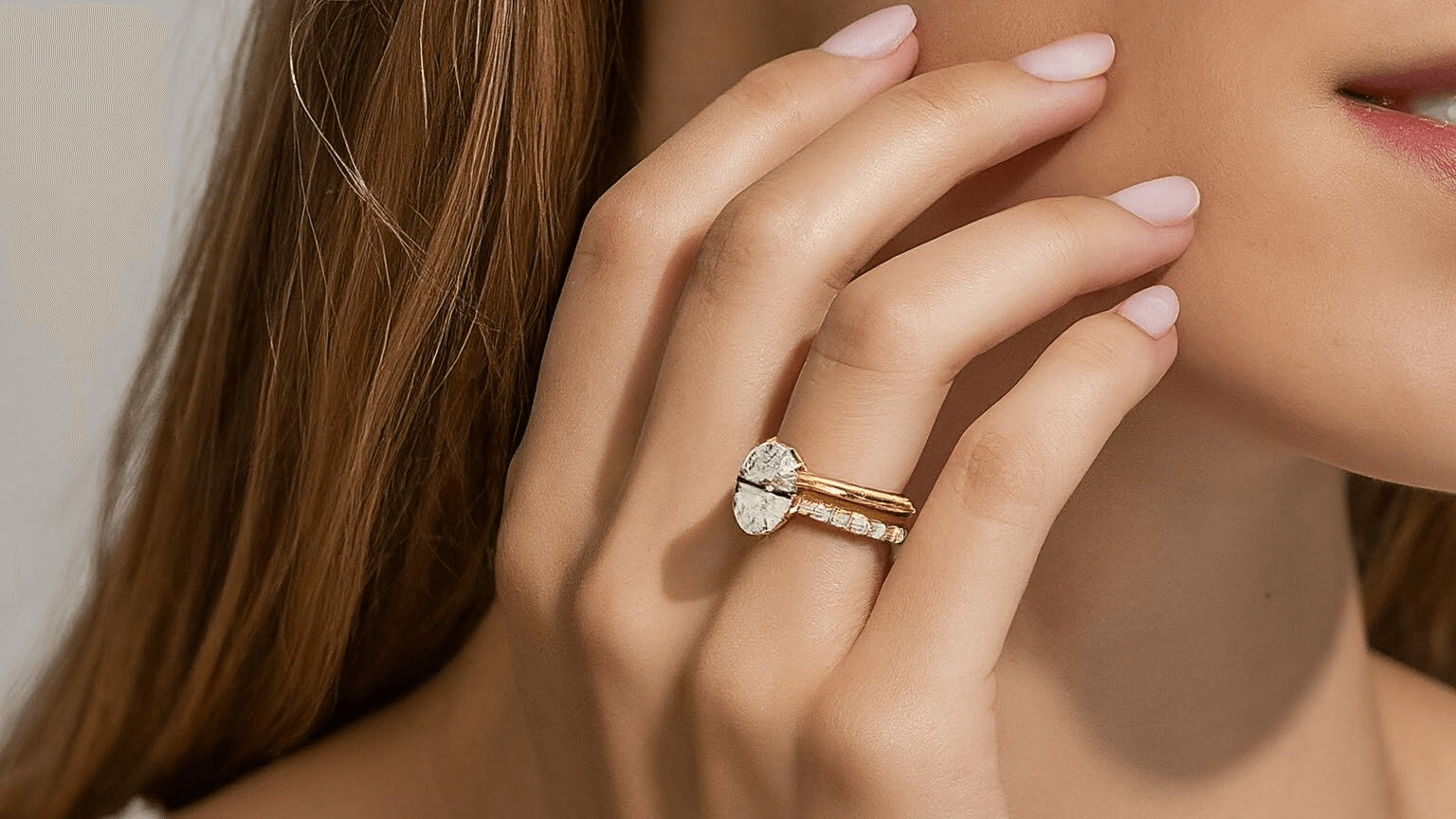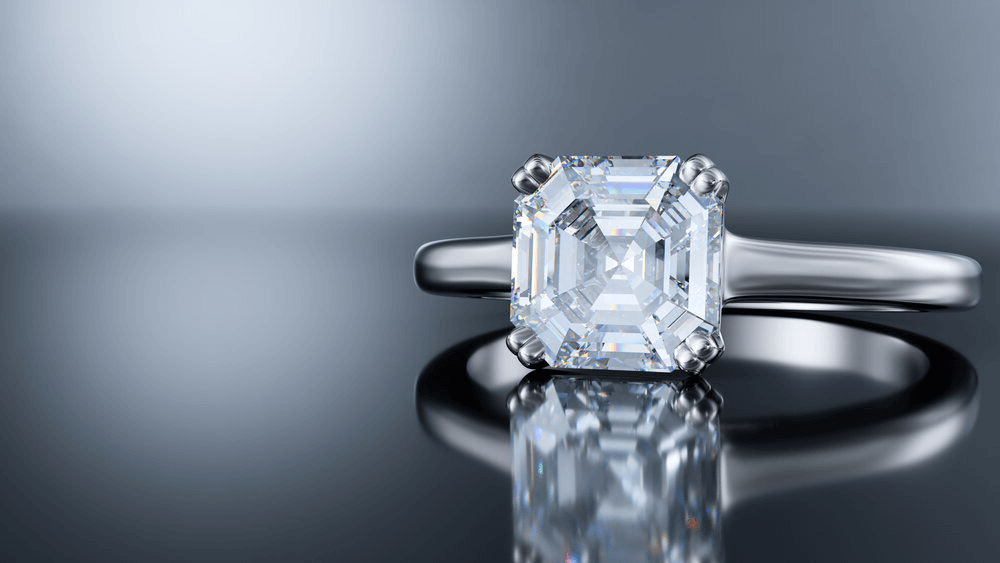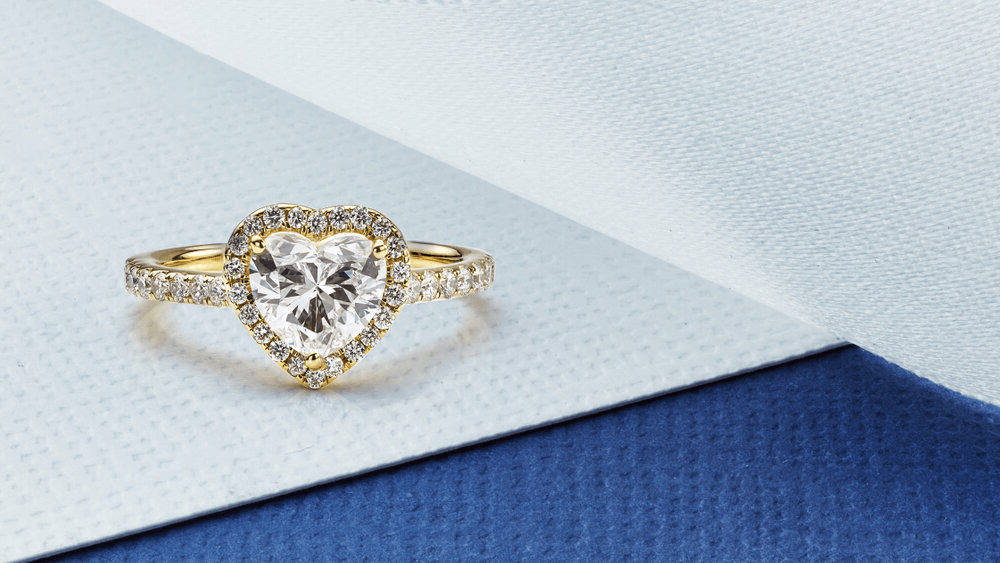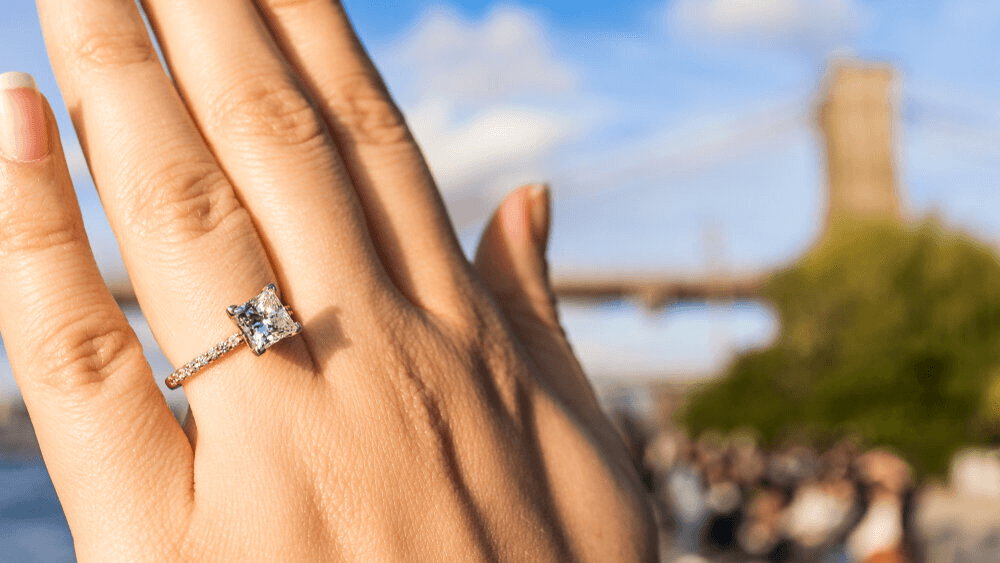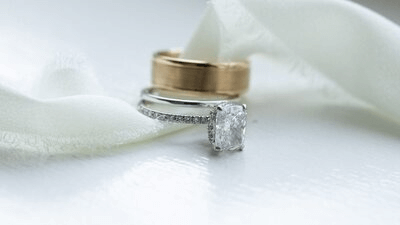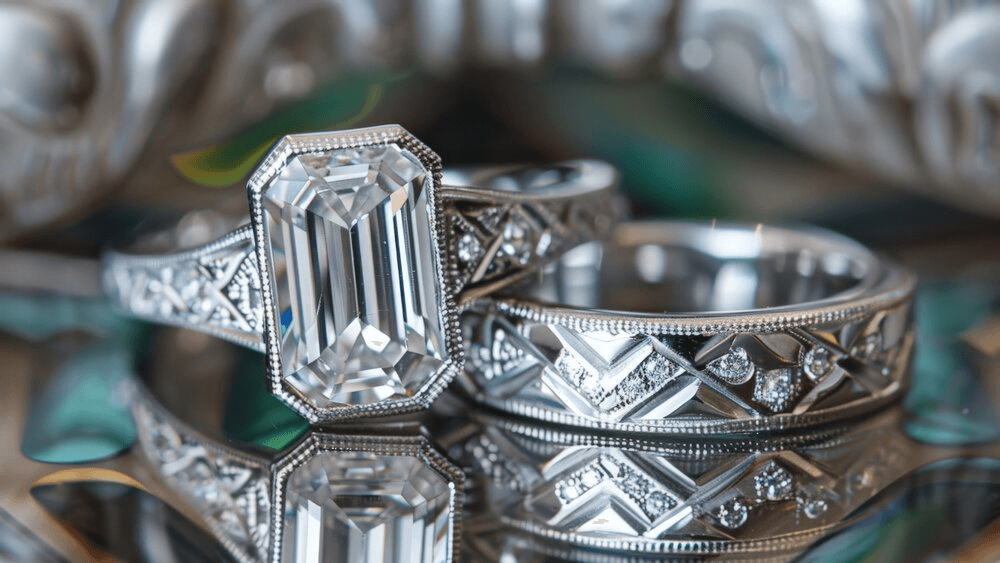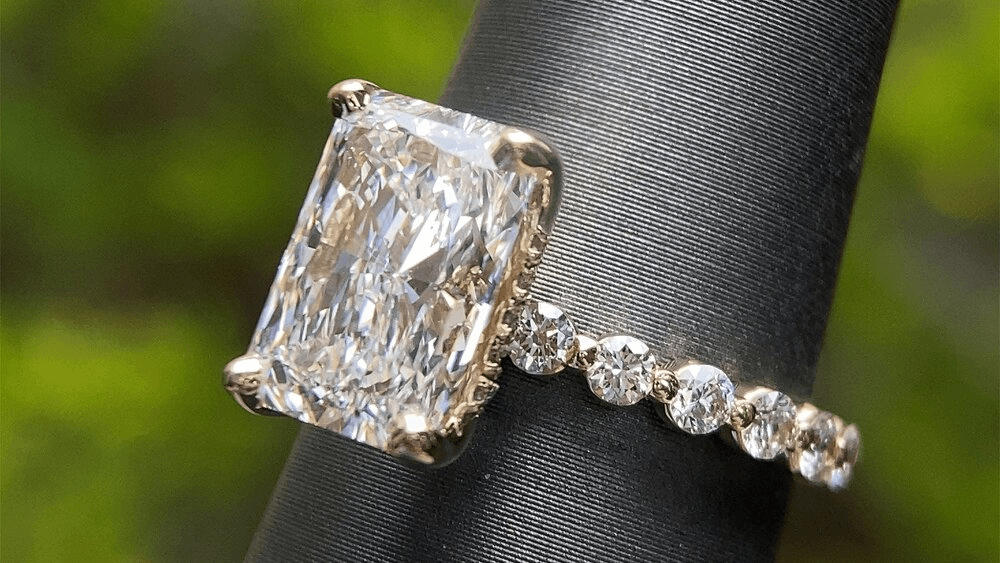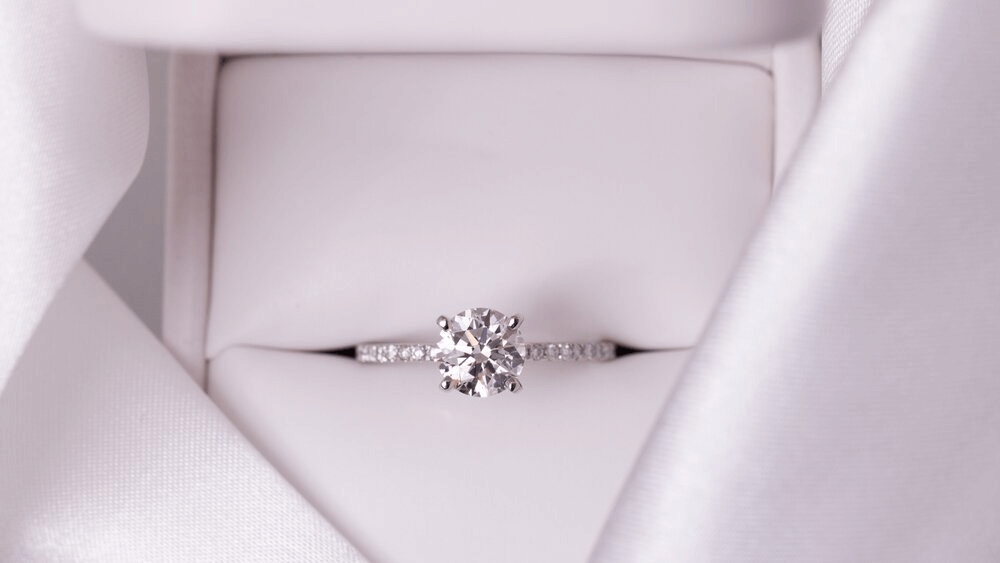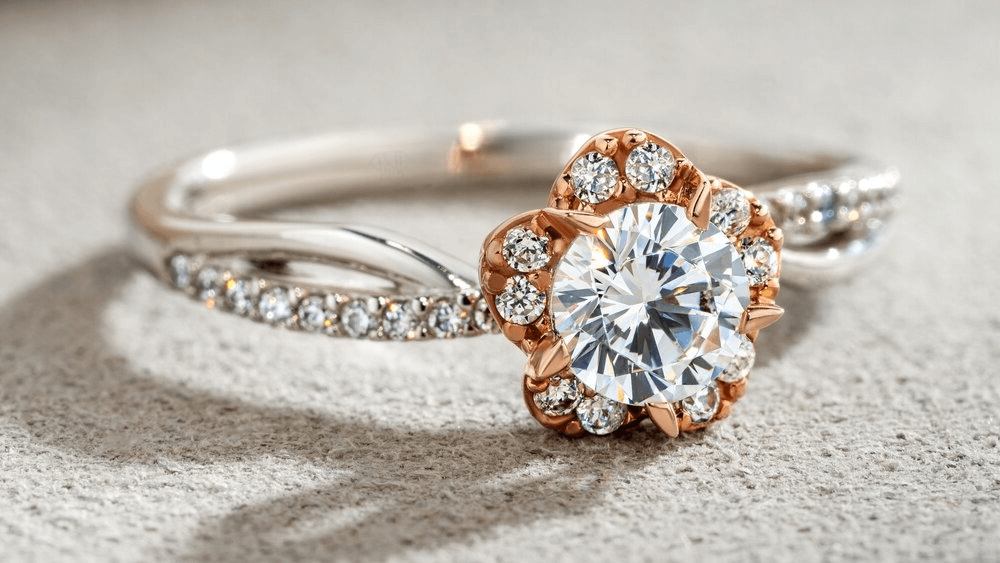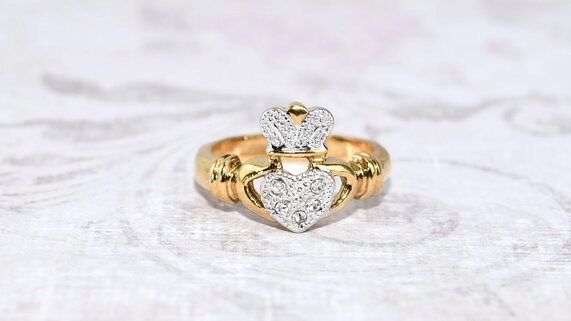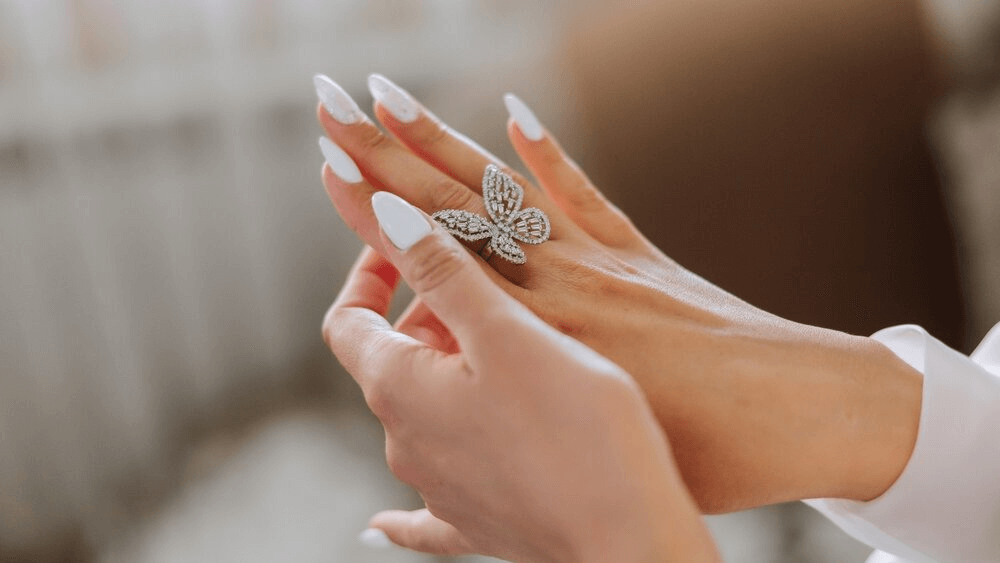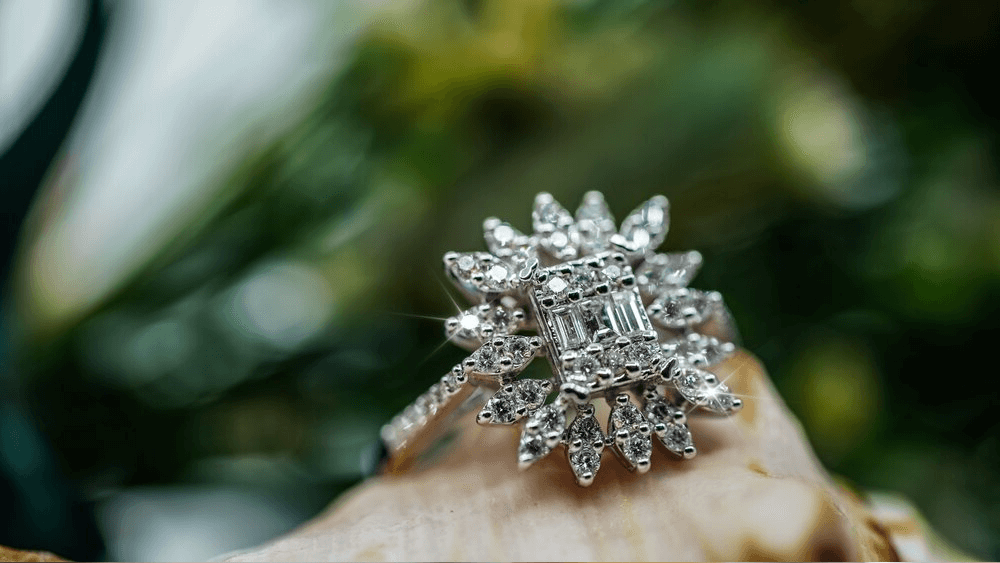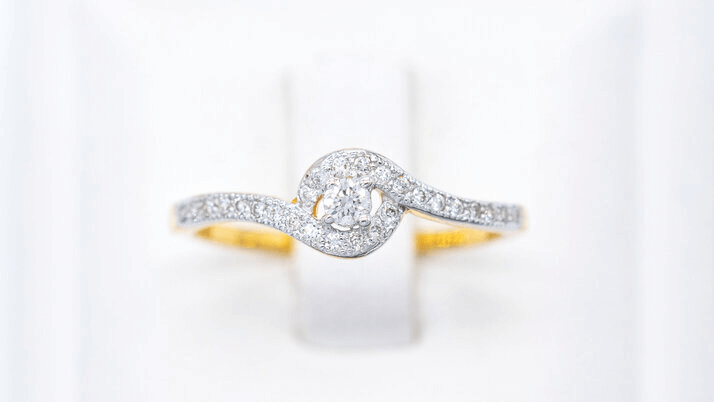Criss Cross Diamond Rings: Intertwined Destinies in Elegance

By Gary A.

Edited by Olivia H.
Published Aug 13, 2024
Edited on Dec 18, 2024
Criss cross engagement rings are the epitome of elegance, intertwining two paths into one, perfect for symbolizing your shared journey in a uniquely beautiful way. Dive into our guide to discover the allure and meaning behind these exquisite designs.

Navigate this guide:
- 5 Quick Tips for Choosing a Criss Cross Diamond Ring
- Introduction to Criss Cross Engagement Rings
- Symbolism Behind the Criss Cross Design
- Choosing Your Criss Cross Ring
- Our Expert Take
- 10 FAQs
Before we dive deeper into the specifics, here are some practical tips to help guide your decision-making process:
5 Quick Tips for Choosing a Criss Cross Diamond Ring
Tip 1. Examine the Setting Closely:
- For a Criss Cross Engagement Ring, ensure that the bands are securely set and don’t have any loose points. The bands should intersect smoothly without any gaps or misalignments.
Tip 2. Check the Ring’s Metal Quality:
- The choice of metal can influence the ring’s durability and appearance. Popular choices include white gold, yellow gold, rose gold, and platinum. Ensure the metal complements the diamond and is of high quality.
Tip 3. Ensure a Secure Setting for the Diamond:
- The diamond should be securely set in the ring to prevent it from falling out. Prong settings are common, but with criss-cross designs, the setting might be more intricate. Ensure the prongs or bezel securely grip the diamond.
Tip 4. Consider the Ring’s Practicality:
- Think about the wearer’s lifestyle. A ring with a high-set diamond or protruding design might not be suitable for someone with an active lifestyle or hands-on job. The criss-cross design should be comfortable and not catch on clothing or other items.
Tip 5. Get a Grading Report:
- Purchase the diamond from a reputable jeweler who provides a grading report from a recognized gemological laboratory. This report will detail the diamond’s 4 Cs and ensure its authenticity.
Now that you’ve got these practical tips, use Jeweler AI below to find the perfect engagement ring that suits your style and budget:
Introduction to Criss Cross Engagement Rings
Even something as simple as a plain gold band holds a huge amount of symbolism in its design. The band is representative of an unbroken circle – an eternity that fits in the palm of your hand – or, more aptly, on the fourth finger of your left hand.
But there are plenty of ways to reimagine the plain band design of a typical wedding ring without losing any of that symbolism. In the process, you can add even more to the design without going crazy adding details here, there and everywhere.
One of our favorite examples of this is the criss cross design. Great for wedding bands and engagement rings alike, this variation on the straightforward shank is a small but powerful declaration of your love story.
In this article, you’ll find everything you need to know.
Defining the Diamond Criss Cross Ring Style
The criss cross design features two (or perhaps more) separate shanks that are delicately interwoven. This adds a lot of interest to the design, gives you the opportunity to introduce a lot more sparkle in the form of pavé or channel set diamonds, or combine a decorated band with a plainer band that shows off your chosen metal, or another design feature like milgrain.
The shanks may cross over only twice, or they may cross one another many times along the circumference of the band.
Emergence in Jewelry Trends
The cross cross diamond ring has been on the scene for a very long time. That gentle curve that’s achieved when the two shanks twist is perfect for more organic, nature-inspired designs like art nouveau, and it has a soft, romantic appeal that has made it enduringly popular.
But the classics can always be reinvented, and there are plenty of criss cross designs that appear much more modern. Contemporary designers often create more space between the two shanks, meaning the ring takes up more space and exposes more of the finger in that ‘negative space’ between the bands.
Why They Stand Out
If you’re using a pavé or channel setting on both shanks, then the ring will stand out for the amazing sparkle it produces. This is particularly true if you’re using the criss cross ring design on an engagement ring since the accent stones will really compliment the center stone and bring out all that fire and brilliance.
But you don’t need diamonds to make a criss cross ring stand out. The design makes a bold statement, and an added streak of gold or platinum is very striking.
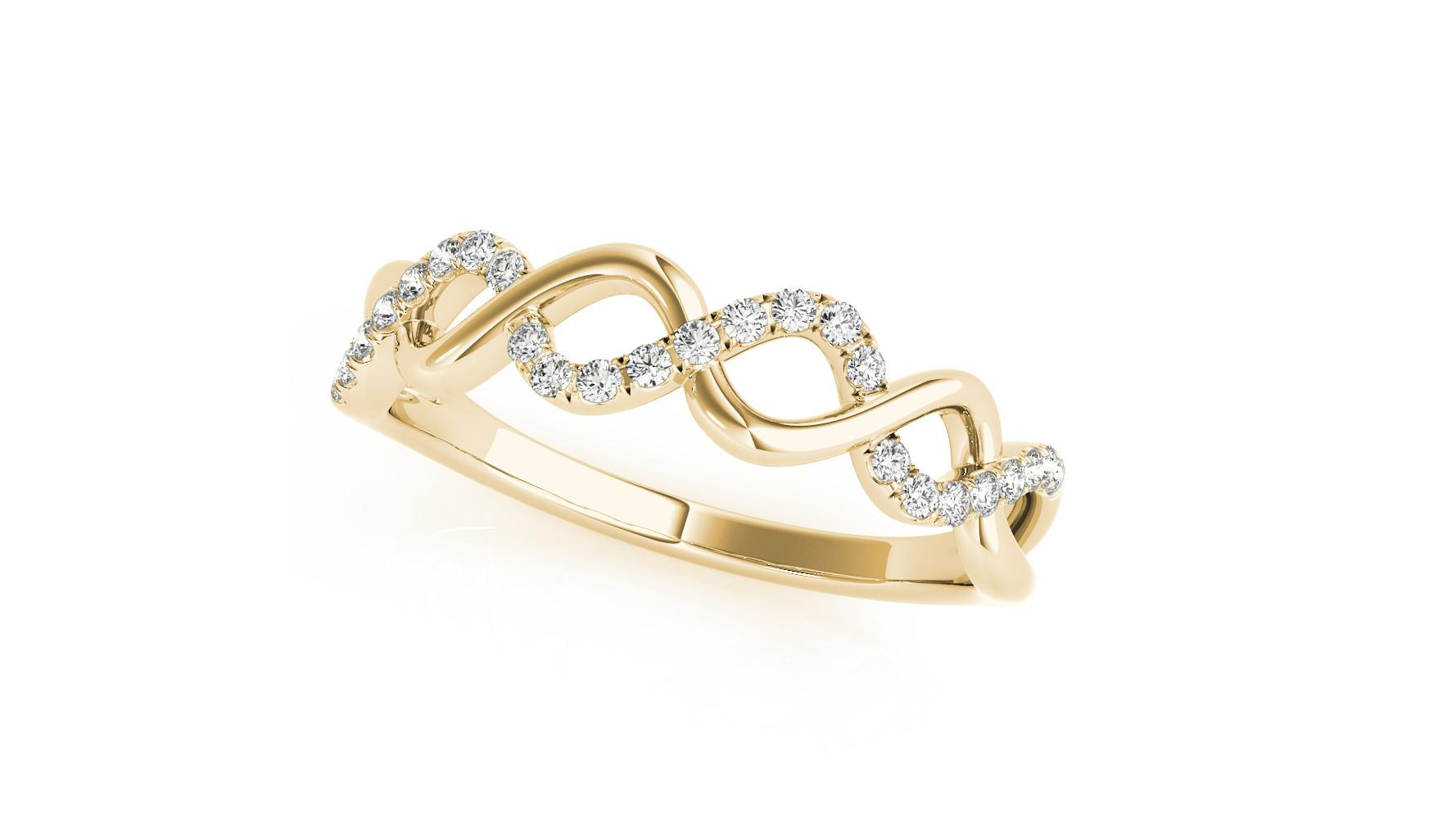
Symbolism Behind the Criss Cross Design
While a single band represents a never-ending love story, the criss cross design is often seen as a symbol of your intertwining love stories. While the two of you are coming together for the rest of your lives, you will always remain two separate individuals, and that’s exactly what the criss cross diamond ring depicts: inseparable, but distinct.
If you really want to embrace that symbolism, consider ways of representing your two different personalities on the bands. If one of you is more outgoing, add a pavé – or even a double pavé. If the other is more retiring and quieter, opt for a plainer band with a little engraving on it – or nothing at all.
Alternatively, combine band shapes – knife-edge and fluted are two subtle but powerful alternatives.
Finally, think about metal choice. While most of us have a preference for yellow gold, rose gold, or white gold (and platinum), you may be open to the idea of a mixed metal engagement ring. The results of this can be very striking, particularly if they’re combined in a criss cross design.
Choosing Your Criss Cross Ring
If you’re choosing a criss cross ring style for your engagement ring, then remember that your main focus should be on the quality and appearance of the center diamond – not every single diamond that will be used to accent the band.
That’s not to say you shouldn’t care about the diamonds in a pavé or channel setting design, but that the center stone is much more important – both in terms of your time and your money.
Either way, there are some elements you want to focus on. First of all, you need to ensure that the ring will be comfortable and practical to wear. While wider spreads between the two shanks looks great – and certainly works a treat on Beyoncé’s ring finger – it does take up a lot of space and exposes more of the finger to being ‘pinched’ against the band throughout the day.
Think carefully about the size of your or your partner’s finger, and whether or not they’re going to be adding a wedding band and eternity band later on. If so, err on the side of caution and opt for a narrower fit.
Evaluating Diamond Quality
When you’re considering a pavé or channel setting on the shank, you’ll often see those smaller diamonds referred to as melee diamonds.
This simply refers to any diamond under 0.15 carats – in other words, the exact type of diamond you’ll want along your ring’s band or bands.
Evaluating the quality of melee diamonds is very different to evaluating the quality of larger diamonds. Here’s how you need to approach the Four Cs differently:
- Carat – every diamond should be as close as possible in carat weight to the others. When they’re all set alongside one another, any discrepancies will seem major – even if, on paper, they’re relatively minor.
- Cut – very important still, you’ll want to aim for an Excellent or Very Good cut across the board.
- Color – super important, but you don’t need to go as high up the scale. What is important is ensuring they are all the same color grade – again, any discrepancies between one diamond and the next will look very obvious when the ring is complete.
- Clarity – again, still important, but eye cleanliness is a lot easier to attain in smaller diamonds. Try spotting a minor black spot in a diamond that’s 0.15 carats!
The thing to remember, however, is that it’s quite rare for the buyer to choose each individual melee diamond that’s going to be used in their ring. Instead, it’s down to the jeweler to ensure consistency between every diamond they’re using. Provided you’re shopping from a reputable store, you shouldn’t run into any issues.
Our Expert Take
We love the vibe a criss cross ring brings, whether it’s a neatly coiled pair of shanks or something that takes up much more space on the finger. While it may seem like a relatively simply change to make to the traditional ring design, this is a great way to elevate each element separately, to give the ring more command over the finger, and to turn even something as simple as a solitaire into a real showpiece.
10 FAQs
Here are the answers to the 10 most valuable questions:
- 1. What is a Criss Cross Engagement Ring?
- – A Criss Cross Engagement Ring features a distinctive design where two or more bands intersect, creating a woven or intertwined appearance. This design is both modern and symbolic, representing the intertwining of two lives. The intersecting bands often highlight a central diamond or gemstone, making it a visually striking and meaningful choice for an engagement ring.
- 2. Why should I choose a Criss Cross Engagement Ring?
- – Choosing a Criss Cross Engagement Ring offers several benefits. The design is unique, offering a departure from traditional solitaire or halo settings. It symbolizes unity and partnership, making it a perfect metaphor for marriage. Additionally, the intersecting bands can make the center stone appear larger and more prominent, enhancing the overall brilliance and presence of the ring.
- 3. What materials are Criss Cross Engagement Rings made from?
- – Criss Cross Engagement Rings are typically made from high-quality metals such as white gold, yellow gold, rose gold, and platinum. These metals are chosen for their durability and aesthetic appeal. Platinum is prized for its strength and hypoallergenic properties, while gold, in its various shades, offers a range of classic and contemporary looks. The choice of metal can affect the ring’s durability, color, and how it complements the wearer’s skin tone.
- 4. What is the symbolism behind a Criss Cross Engagement Ring?
- – The Criss Cross design carries deep symbolism, representing the merging of two lives and paths into one. Each band in the ring symbolizes an individual’s journey, and where they intersect signifies the shared future of the couple. This makes the Criss Cross Engagement Ring not just a piece of jewelry, but a meaningful emblem of love, partnership, and commitment.
- 5. How does a Criss Cross Engagement Ring compare to traditional rings?
- – Criss Cross Engagement Rings offer a more modern and intricate design compared to traditional rings. While classic rings often focus on a single band and central stone, Criss Cross rings add complexity with their intersecting bands, which can make the ring more visually interesting. This design also provides additional opportunities for customization, such as incorporating different metals or adding pave-set diamonds along the bands, making each ring truly unique.
- 6. What should I consider when buying a Criss Cross Engagement Ring?
- – When buying a Criss Cross Engagement Ring, consider the quality of the diamonds or gemstones, the choice of metal, and the craftsmanship of the ring. Ensure that the diamonds meet the 4Cs (Cut, Clarity, Color, Carat) standards for optimal brilliance. The metal should match the wearer’s lifestyle—platinum for durability, or gold for a classic look. The craftsmanship should be flawless, with well-aligned bands and securely set stones, ensuring both beauty and longevity.
- 7. How do Criss Cross Engagement Rings interact with light?
- – The intersecting bands in a Criss Cross Engagement Ring create multiple angles for light to reflect off the diamonds, enhancing their sparkle. The design allows light to enter the ring from various directions, maximizing the brilliance of the center stone and any accent diamonds. This interplay of light adds depth and dimension to the ring, making it a dazzling choice for an engagement ring.
- 8. Can Criss Cross Engagement Rings be paired with other jewelry?
- – Yes, Criss Cross Engagement Rings are highly versatile and can be paired with a variety of other jewelry. They can be complemented with simple wedding bands or stackable rings for a layered look. The design also pairs well with minimalist earrings and bracelets, ensuring the ring remains the focal point. When choosing complementary pieces, consider matching the metal type and keeping other jewelry understated to allow the Criss Cross design to shine.
- 9. Are Criss Cross Engagement Rings suitable for everyday wear?
- – Criss Cross Engagement Rings are designed to be both beautiful and durable, making them suitable for everyday wear. However, because of their intricate design, it’s important to consider the wearer’s lifestyle. Rings with high-set diamonds or elaborate designs may require extra care to avoid snagging on clothing or getting damaged during physical activities. Regular maintenance and professional cleaning can help keep the ring in excellent condition for everyday use.
- 10. What is the price range for Criss Cross Engagement Rings?
- – The price of a Criss Cross Engagement Ring can vary widely depending on factors such as the choice of metal, the quality and size of the diamonds, and the complexity of the design. On average, prices can range from $1,500 for simpler designs in white or yellow gold with smaller diamonds, to over $10,000 for more elaborate rings in platinum with high-quality diamonds. Customizations and additional features, like pave-set diamonds along the bands, can also increase the overall cost.
Create your intertwined love story with Jeweler AI’s exquisite criss cross engagement rings. Explore now!
FOLLOW-UP GUIDE SERIES





